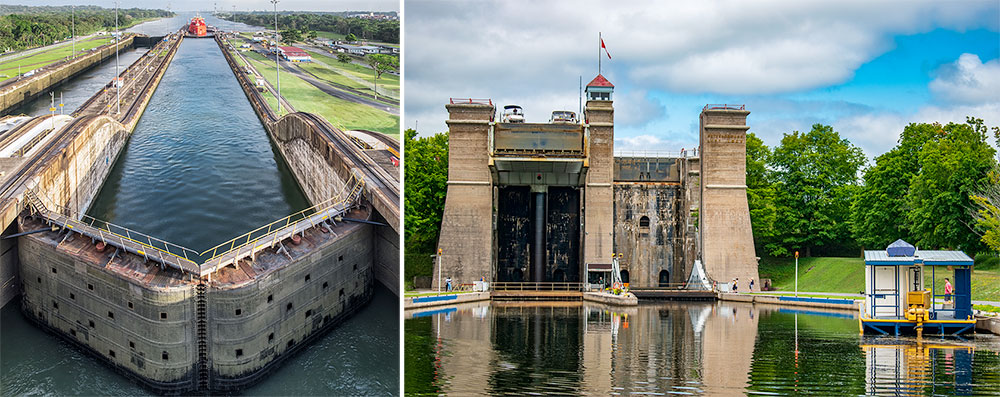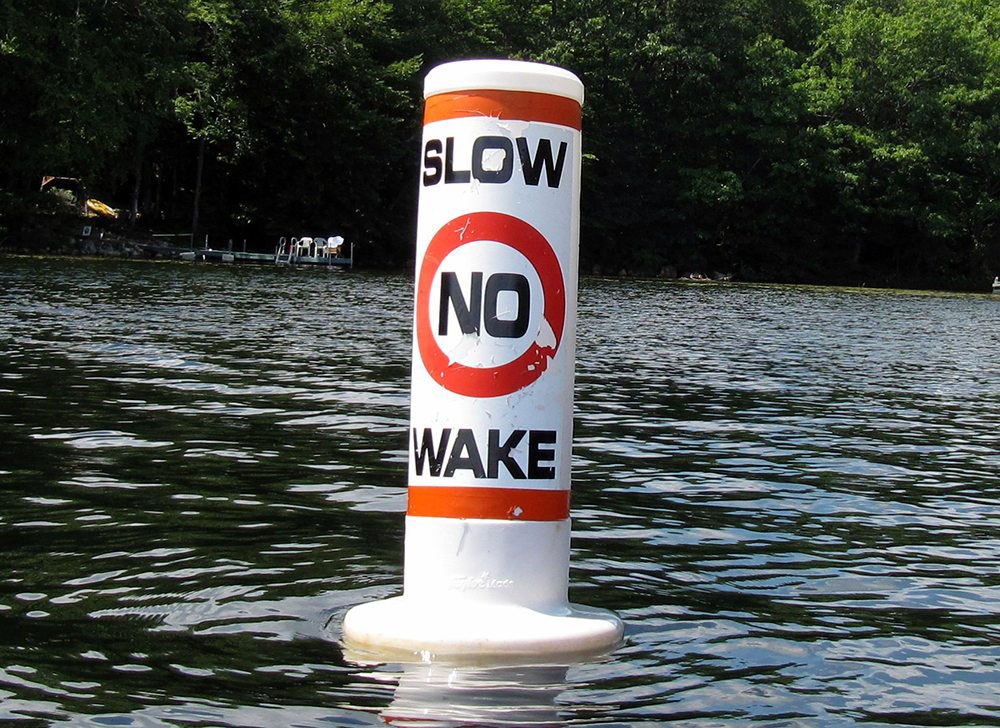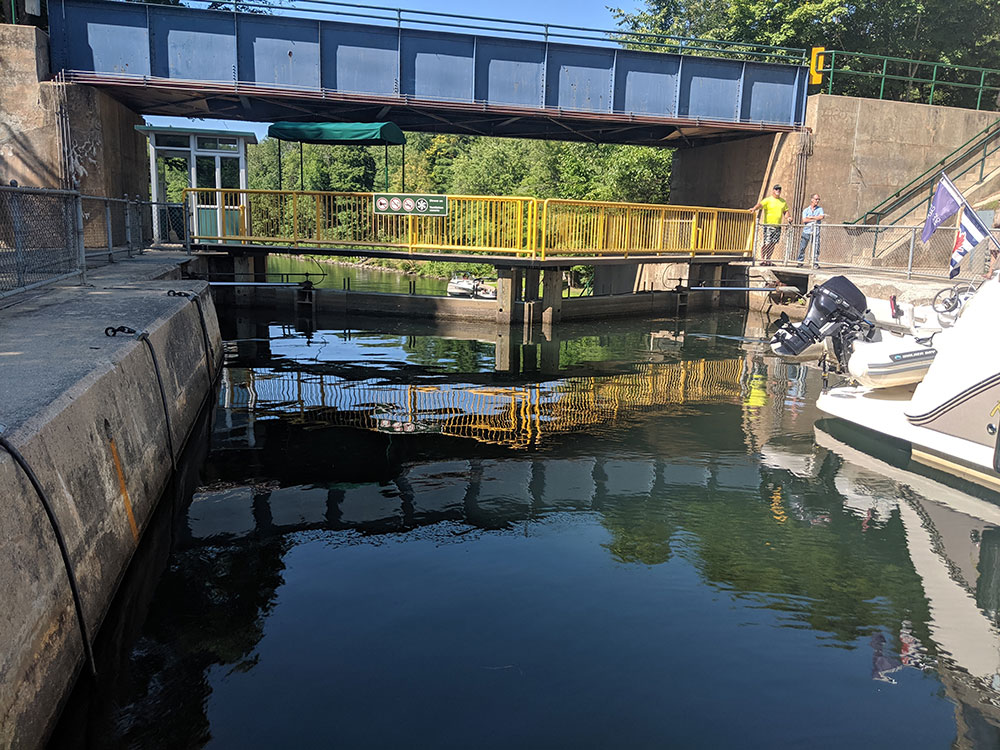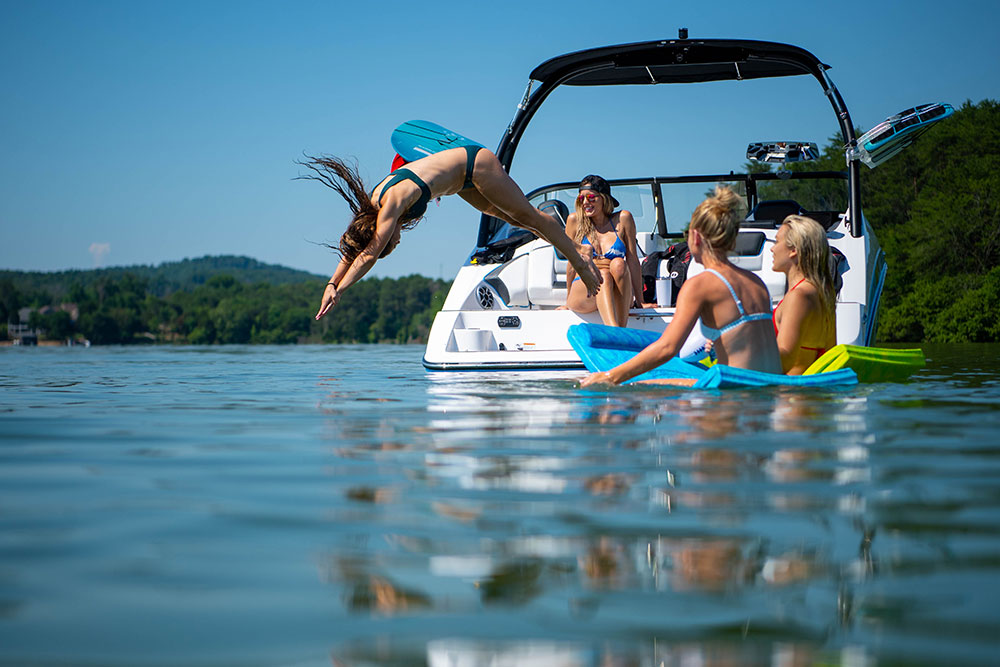With millions of acres of lakes, rivers and waterways in Canada, the boating possibilities are seemingly endless and just waiting to be discovered. Some of these waterways can be harder to access and may require the use of a lock – something most boaters rarely encounter.
As much as they are few and far between, every boater should know what to expect and what is expected of them at a lock just in case the time comes when they want to go beyond.
In its simplest form, a lock is a gated section that raises and lowers water internally to move a craft from one waterway to another when they have different water levels; think an elevator for boats. Locks are found all over the world and allow you to travel by water to places you otherwise wouldn’t be able to access.

Tackling a lock may seem intimidating but the everyday boater can easily navigate one by simply breaking the process into three phases: the approach, the flood and the exit.
Phase 1: The Approach
Unless you have impeccable timing, you will likely arrive before it’s time to enter the lock and must wait your turn. When approaching a lock, consider speed and space.
First, approach at a speed with little to no wake to ensure minimal disturbance to other boaters, the shoreline and the lock system. Second, give other boaters room to manoeuvre and allow for a safe exit from the lock.
Locks often have a small temporary docking area where you can tie up and wait. If there is no dock or it’s full, just be mindful not to block the lock exit and give other boaters their space. While you’re waiting for your turn, get your dock lines and buoys ready for when you enter the lock.

Phase 2: The Flood
Once the gates open and the exiting boats have cleared, it’s time to enter the lock. You’ll want to manage your speed again as to create little to no wake. Locking is a slow process – expect to take some time.
Lock loading and flooding are controlled by the lock operations staff, who will tell you when it’s time to enter and where to position your boat once inside. Make sure to listen for instructions and watch for any visual indicators (like a green light).
Once you’re in position in the lock, loop a dock line around the drop cables nearest to the bow and stern to secure your watercraft. Never tie off to a drop cable, as your ropes need to slide up and down when the water level changes. When you’re looped onto the drop cables, turn off your engine and enjoy the ride. It’s best to stay seated and wear your PFD.

Phase 3: The Exit
Boaters exit the lock one-by-one, just like the entry., Lock operation staff will have you exit in the same order you entered. Once the gates begin to open, start your engine but stay looped onto the drop cables until it is your turn to move. When all other boats ahead of you have exited, slowly make your way out, past any slips, and start enjoying the new waters that lie beyond, ready to be discovered!



 All Yamaha News
All Yamaha News